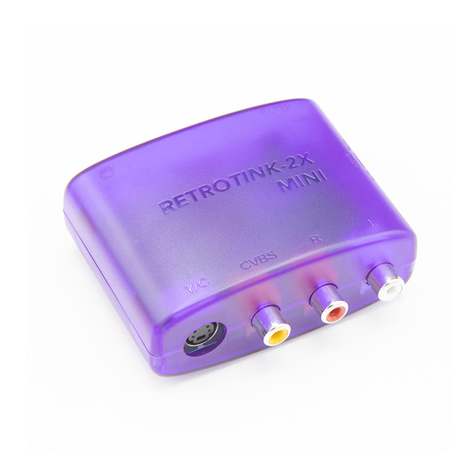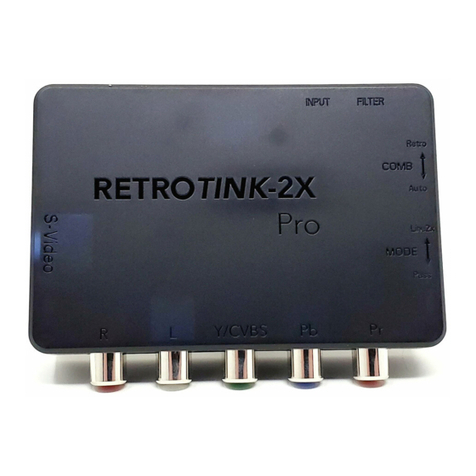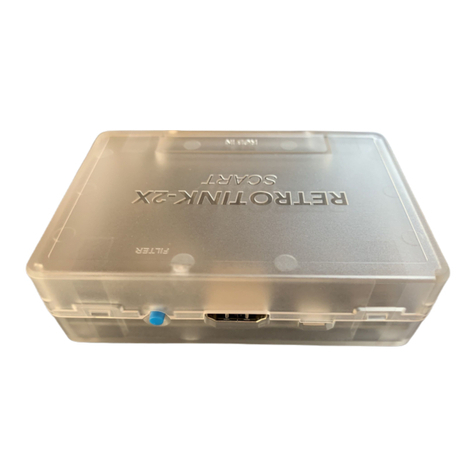Caution - Read Carefully Before Use
1. Only use SCART cables that provide sync using 75 ohm terminated luma or composite
video or buffered/attenuated CSYNC. Use of unbuffered TTL CSYNC is expressly
prohibited and may result in incompatibilities and/or damage. Under no circumstance is
RetroTINK LLC responsible for the use of improperly designed SCART equipment.
2. Only use the RetroTINK provided firmware update tool for USB updates. Attempts to flash
the device using alternate methods, such as directly via the ICD pins on the PCB, may
result in device malfunction and damage. Under no circumstance is RetroTINK LLC liable
for failure due to improper firmware flashing.
3. Use a high-quality USB power source capable of supplying at least 1 A of current to your
RT5X. Low quality USB power supplies may result in device malfunction and/or video
noise. It is also important to use a good quality USB cable. Poorly manufactured cables
drop voltage under high currents, which may result in video noise and device malfunction.
4. The RT5X is a high quality video scaler with minimal processing, such as artificial noise
reduction, to accurately reproduce the original signal from the game console. For good
results, it is imperative that high quality cabling is used to avoid noise and interference.
We generally recommend HD Retrovision component cables or high quality shielded/
coaxial SCART RGB cables. Generic, low-cost SCART cables will show interference, noise,
unreliable sync, picture drops and in the worst cases, may result in damage to your RT5X. !
!
We recommend shielded SCART cables using composite video as sync with 75 ohm
source impedances, per the standard.!
!
Unshielded S-video cables will almost certainly show chroma checker boarding, especially
at higher output resolutions.
5. Use common sense when handling the RT5X - it is an expensive piece of electronics. Do
not drop, crush or immerse your RT5X in a liquid. The warranty does not cover accidental
damage and/or abuse to the unit.






























